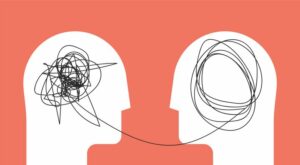Anxiety is a common mental health issue that affects millions of people worldwide. It can be a debilitating condition, interfering with one’s daily life, work, and relationships. While traditional talk therapy and medication have been effective for many individuals, Eye Movement Desensitization and Reprocessing (EMDR) has emerged as a promising alternative for the treatment of anxiety disorders. In this article, we will explore the intricacies of EMDR as a therapeutic approach to managing anxiety, its effectiveness, and how you can access this treatment.
Contents
How Is EMDR Connected To Anxiety?

While EMDR is not a first-line treatment for general anxiety disorders, it can sometimes be beneficial for individuals with anxiety when their symptoms are linked to past traumatic experiences or distressing memories. Here’s how EMDR is connected to anxiety:
- Addressing Trauma-Related Anxiety: EMDR is designed to help individuals process and heal from traumatic experiences that may contribute to anxiety. Trauma can lead to persistent anxiety symptoms, as the brain and body remain on high alert due to unresolved emotional and psychological distress. EMDR aims to target and reduce the emotional distress associated with traumatic memories, which can alleviate anxiety symptoms stemming from those experiences.
- Reprocessing Traumatic Memories: EMDR involves a structured eight-phase approach, one of which is the reprocessing of traumatic memories. During this phase, a therapist guides the individual in recalling distressing memories while simultaneously engaging in bilateral stimulation, typically through eye movements, hand taps, or auditory tones. This process helps the individual reprocess the memory, reducing its emotional charge and making it less distressing. By addressing the root cause of anxiety (traumatic memories), EMDR can lead to a reduction in anxiety symptoms.
- Reducing Hyperarousal: Anxiety often involves a heightened state of physiological and psychological arousal. Traumatic memories can contribute to this hyperarousal, as they can trigger the “fight or flight” response even when no immediate danger is present. EMDR can help individuals reduce this hyperarousal by desensitizing them to traumatic memories. This allows them to react less strongly to anxiety triggers.
How Does EMDR Work?
EMDR consists of eight distinct phases, each serving a unique purpose in the therapeutic process.
Phase 1: History-taking
During this phase, the therapist gathers information about the client’s history, identifying traumatic events and their associated emotions and sensations.
Phase 2: Preparation
Clients are prepared for the EMDR process, and the therapist explains the treatment’s techniques and goals.
Phase 3: Assessment
Specific targets, such as traumatic memories or negative beliefs, are identified for reprocessing.
Phase 4: Desensitization
EMDR’s hallmark phase involves bilateral stimulation, which can be eye movements or other sensory experiences, to facilitate the processing of traumatic memories.
Phase 5: Installation
Positive beliefs are instilled to replace negative ones formed during traumatic events.
Phase 6: Body Scan
Physical sensations related to the trauma are addressed, ensuring complete processing.
Phase 7: Closure
Clients are stabilized and grounded, leaving the session in a state of emotional balance.
Phase 8: Reevaluation
The therapist assesses progress and reprocesses any remaining distressing material.
Finding an EMDR Therapist for Anxiety
Finding an EMDR therapist for anxiety involves a few steps to ensure you locate a qualified and experienced professional who can provide effective treatment. Here’s a guide on how to find an EMDR therapist:
- Assess Your Needs: Determine whether EMDR therapy is the right choice for your anxiety. EMDR is most effective when anxiety is linked to past traumatic experiences or distressing memories. If your anxiety is not trauma-related, other therapeutic approaches like cognitive-behavioral therapy (CBT) may be more suitable.
- Consult with a Mental Health Professional: It’s a good idea to start by consulting with a mental health professional, such as a psychiatrist, psychologist, or licensed clinical social worker. They can help assess your needs and provide recommendations, including whether EMDR is appropriate for you.
- Search Online Directories: Use online directories to search for EMDR therapists in your area. Websites like Mantracare and Therapymantra can help you locate EMDR therapists near you. These directories often provide profiles with therapists’ specialties, credentials, contact information, and office locations.
- Ask for Referrals: Seek recommendations from trusted sources, such as friends, family members, or healthcare professionals. Someone you know may have experience with an EMDR therapist or be able to refer you to one.
What to Expect in an EMDR Session?
Eye Movement Desensitization and Reprocessing (EMDR) therapy typically involves a structured approach that includes several phases and follows a specific protocol. Here’s what you can generally expect in an EMDR session:
- Assessment and Preparation: Initially, your EMDR therapist will conduct a thorough assessment of your history, current issues, and symptoms to determine if EMDR is an appropriate treatment for your needs. They will explain the EMDR process and discuss your treatment goals. If EMDR is deemed suitable, you’ll begin preparing for the therapy.
- Building Trust and Rapport: A strong therapeutic relationship is essential for EMDR to be effective. You’ll work with your therapist to build trust and establish rapport so that you feel comfortable discussing your experiences and emotions.
- Target Identification: Together with your therapist, you’ll identify the specific traumatic memories, distressing events, or negative beliefs that are contributing to your current difficulties. These will be the targets of the EMDR therapy.
- Desensitization: The main phase of EMDR involves reprocessing the traumatic memories or distressing thoughts while simultaneously engaging in bilateral stimulation. Bilateral stimulation can be achieved through various means, such as following the therapist’s hand movements with your eyes, tapping, or auditory tones. You’ll focus on the distressing memory or thought while experiencing these bilateral stimuli.
Is EMDR Safe for Everyone?
Here are some considerations regarding the safety of EMDR:
- Trauma-Related Conditions: EMDR is primarily designed for individuals who have experienced trauma or distressing events that contribute to their mental health symptoms. It is often used to treat conditions like post-traumatic stress disorder (PTSD), acute stress disorder, and other trauma-related disorders.
- Assessment and Screening: Before starting EMDR therapy, a thorough assessment by a qualified mental health professional is essential. They will evaluate your history, current symptoms, and personal readiness for EMDR. This assessment helps determine whether EMDR is the right treatment for your specific needs.
- Safety Concerns: EMDR can sometimes bring up intense emotions and distressing memories. Therefore, it is essential to work with a trained and experienced EMDR therapist. These are those who can provide a safe and supportive therapeutic environment. Your therapist will help you manage and cope with any emotional reactions that may arise during the sessions.
- Co-Occurring Conditions: Individuals with complex mental health conditions, co-occurring substance use disorders, or severe dissociative disorders may require specialized assessment and treatment. EMDR may not be appropriate for individuals with certain dissociative disorders or those who are actively using substances that can impair the therapeutic process.
- Medication Considerations: If you are taking medications for mental health conditions, it’s important to inform your therapist about your medications and any potential interactions or side effects that may affect your EMDR treatment.
Limitations and Criticisms

However, like any therapeutic technique, EMDR has limitations and has faced criticisms. Here are some of the limitations and criticisms associated with EMDR:
- Limited Evidence for the Eye Movement Component: One of the primary components of EMDR involves bilateral stimulation, often in the form of eye movements. Some researchers and critics argue that the eye movement itself may not be a critical factor in the therapy’s effectiveness. They suggest that other forms of bilateral stimulation, such as tapping or auditory tones, may be equally effective, which raises questions about the specificity of the eye movement component.
- Mechanism of Action: While EMDR is effective in treating trauma-related conditions, the exact mechanism of action remains a subject of debate. Furthermore, theories about how and why EMDR works vary, and there is no consensus in the scientific community.
- Lack of Scientific Consensus: While many studies have shown positive results for EMDR, there is ongoing debate and a lack of consensus. This is among researchers regarding its efficacy. Some critics argue that EMDR’s success may be due to factors like the therapeutic relationship with the clinician. This is rather than the specific components of the therapy.
- Not a One-Size-Fits-All Approach: EMDR is primarily designed for individuals with trauma-related conditions. It may not be suitable for all mental health issues or for individuals who do not have a history of trauma. Other therapeutic approaches, such as cognitive-behavioral therapy (CBT), may be more appropriate for different conditions.
Tips for Coping with Anxiety

Coping with anxiety can be challenging, but various strategies and techniques can help you manage and reduce anxiety symptoms. Here are some tips for coping with anxiety:
- Breathing Exercises: Practice deep breathing exercises to calm your nervous system. Inhale slowly through your nose for a count of four, hold for a count of four, and then exhale through your mouth for a count of four. Repeat this several times.
- Progressive Muscle Relaxation: Tense and then release each muscle group in your body, starting from your toes and working your way up to your head. This technique can help relieve physical tension associated with anxiety.
- Mindfulness Meditation: Engage in mindfulness meditation to stay present and reduce worrying about the future or ruminating about the past. Mindfulness helps you focus on the here and now.
- Physical Activity: Regular exercise can reduce anxiety by releasing endorphins, which are natural mood lifters. Aim for at least 30 minutes of physical activity most days of the week.
- Healthy Diet: Eat a balanced diet rich in fruits, vegetables, whole grains, lean proteins, and healthy fats. Avoid excessive caffeine and sugar, which can exacerbate anxiety symptoms.
Conclusion
EMDR offers hope to those struggling with anxiety disorders by addressing the root causes of their distress. While it may not be a one-size-fits-all solution, its track record of success and unique approach make it a valuable option to explore for individuals seeking relief from anxiety.
If you are experiencing anxiety related issues, Online Anxiety Counseling at TherapyMantra can help: Book a trial Online therapy session.


